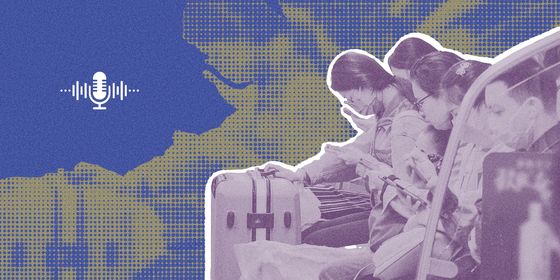From getting laid off to teaching AI courses, hear how employers and staff faced the onslaught of artificial intelligence in four companies
ChatGPT (Chat Generative Pre-Trained Transformer), the language model-based chatbot developed by OpenAI and launched on November 30, 2022, remains a red-hot issue in 2023. These days, various industries seek no-brainer solutions for their needs—voice, image, video, and much more—via AIGC, or Artificial Intelligence Generated Content.
We’re less than one year into this new technological wave. How has it already transformed our workplaces? To find out, we invited four narrators today to share how they cooperated with (and sometimes were replaced by) AI in different industries.
1
Layoffs that Pay Off
Dalong, founder of a dance-based gaming company
Story FM: These days, the internet is buzzing with news of industry layoffs brought forward by AI. Some will even claim that artificial intelligence is hunting the human workforce down. The truth is, business managers see in AI a chance to reduce costs and increase efficiency.
What’s truly at play behind these layoffs? And what goes through the mind of those in charge of such decisions?
Dalong: Hi, Zhu Bolong here—everyone knows me as Uncle Dalong, though. I’m the co-founder of Dalong, an internet technology company providing fitness and educational services, mostly through dance-based gaming. We moved all our dance education online as early as 2016, but 2020 was logically the year that brought a renewed emphasis on reaching family living rooms nationwide. Nowadays, my company employs around 20 people.
I majored in computer science myself, but I didn’t specialize in algorithms. I’ve always kept up with trends related to the internet, though. Then AI came around and I was one of many people giving ChatGPT a go while my business partner checked out some of those text-to-image models. We weren’t too familiar with any of this novelty, so while it all seemed fairly smart, for the first couple of weeks we couldn’t say the results matched our needs. Once we finally unlocked its huge, exciting potential, we also panicked some at the thought of our competitors wielding AI to their advantage and eventually wiping us out of the market. Last February, that fear compelled us to instruct our entire staff to prioritize learning the use of AI tools over their own tasks.
One day, I heard my business partner swearing, “Fuck, man!” I went by his office to check what’d happened and found him kneeling in front of his computer. His eyes were glued to the screen. “Have you checked this out? Much better than my own art.”
Now, this guy used to be a cartoonist and animation director, so he’s quite confident in his own work. There he was, though, ready to acknowledge that AI had “whipped his ass” and that there was “no way I can beat this thing,” so he may as well “give up entirely.” I immediately tried to counter his low spirits. “Okay, dude, so how about you set your mind on learning how to tweak this thing into perfection? Look, at the end of the day, we want this to work for us, right? A stable output means we save time on edits.”
And he really took up the challenge, putting in some six to eight hours of research daily for the next month and a half. He’d often clock out at 10 or 11 in the evening. Ultimately, new technology gets him giddy, so he ended up feeling as though he was just pairing his talent with the computer. Whenever I worked overtime myself, I was serenaded by his excitement at the computer yielding one image after another while he ate his dinner.
Initially, we weren’t familiar enough yet with maximizing the use of prompt words, plug-ins, and whatnot, so we were more than content with an efficiency increase of merely 50 percent. At least we were until a few additional months of research started getting us almost immediately the exact results we were looking for. That was actually quite scary.














